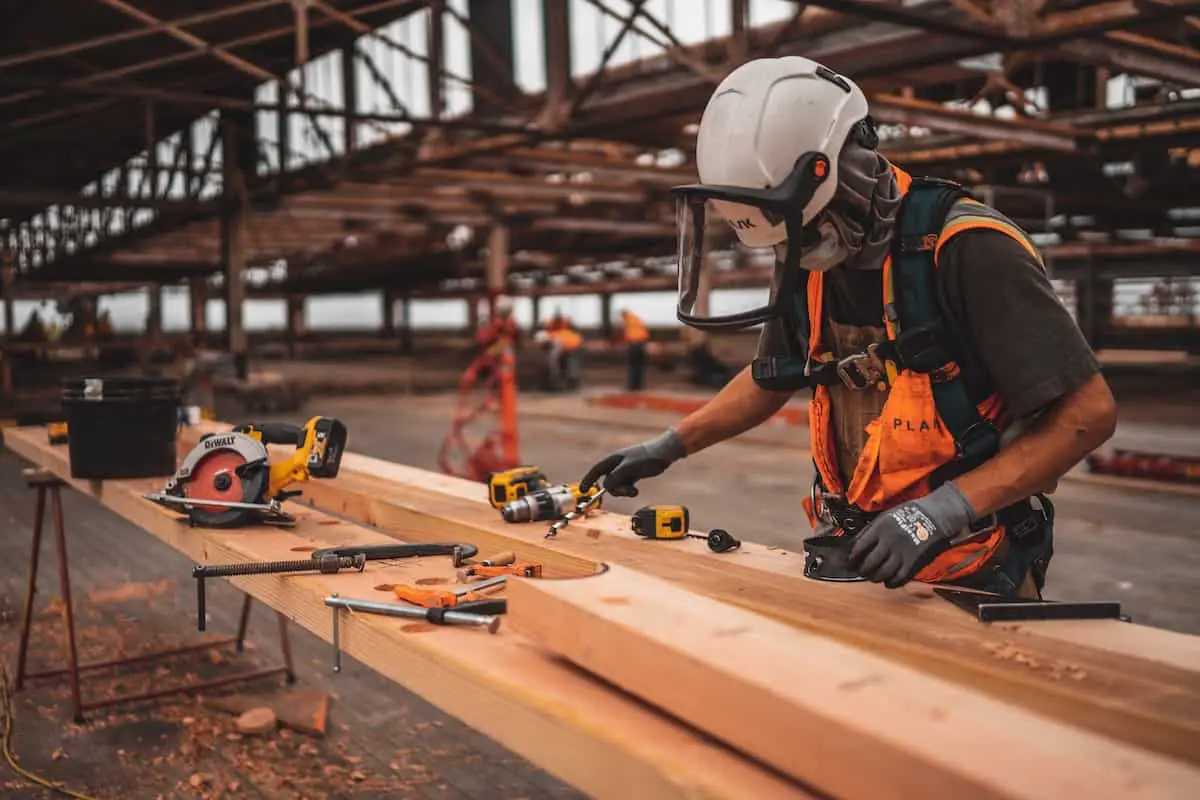Modular construction produces less waste than other construction methods as a direct result of building in a factory-like environment. Since at least 70% of the modular home construction process takes place off-site [1], every aspect of the building procedure from storage to specialized workmanship is centralized in the same space. Together with the usage of sophisticated mechanized tools, this centralization allows a smooth fabrication with low wastage.
Modular construction strategies to reduce waste:
- Construction material reuse
- High-quality construction to reduce maintenance
- Dry assembly to ease recycling
All these strategies are a direct result of the modular construction method and all modular home manufacturers apply them at a higher or lower level. Therefore, we can say that just by building a house using the modular technique, the wastage is naturally reduced. However, some modular home manufacturers are more conscious about sustainability than others and will apply additional strategies to lower their wastage even more.
Strategies that allow all modular construction manufacturers to reduce waste
Modular construction is a specific building technique where most of the process is prefabricated. A modular building is built per modules or sections that are entirely manufactured in a centralized and highly mechanized location. These particularities of modular construction enable the following strategies to occur even when sustainability isn’t the main focus of the company.
Construction material reuse
A modular home manufacturer builds all their houses in the same location, a factory-like environment that resembles an assembly line given the mechanization of the process. This setup has an incredible advantage: all tools and materials are delivered and stored right where construction takes place.
This is a significant advantage in the construction industry because traditional on-site construction requires the delivery of every material, tool, and even worker to the specific location where the house is being built. Given the complexity of the logistics, on-site constructions always have leftover material that has been paid by the client and it is, therefore, the client’s property, which usually translates into unused materials that are being stored or wasted.
With modular construction, the logistics work differently: The modular home manufacturer orders materials in bulk, stores it in their facilities that are right by their manufacturing plant, uses only what’s needed for every module and the leftovers return to the storage to be reused. With this system, everyone wins; the client, the manufacturer and even the environment. The client only pays for the materials used for the construction, the manufacturer experiences no loss and the environment benefits from a wastage-free construction process.
High-quality construction to reduce maintenance
It is often said that modular homes are higher quality constructions in comparison to traditionally built homes. This statement isn’t technically accurate given that both types of houses are built according to the same building codes. However, it is generally certain that modular homes stand out when analyzing the workmanship, attention to detail, and quality control. All these are usually of high-quality thanks to the working conditions and facilities.
The mechanization of the modular construction process offers access to sophisticated equipment allowing for more accurate and clean finishing results [2]. Additionally, since the overall process takes place in a sheltered environment that is protected from unexpected weather events, it offers the optimal conditions to obtain outstanding workmanship results thanks to the comfort and safety of the working conditions.
Added to the excellent working conditions, modular construction offers extensive quality control, monitoring and testing at every construction stage, which facilitates identifying any possible human or computer error. Good quality built modular homes will definitely last longer and require less maintenance in the future which will reduce the need to replace materials and therefore reduce the waste.
Dry assembly to ease recycling
The wastage resulting from construction is the highest during demolition. Traditionally construction manages wastage in a linear process: builds with new materials and throws them away when they are no longer needed. However, with sustainability in mind, we aim for circular waste management where we recycle once we no longer need it. To do so, the construction has to be of good quality and it has to be possible to separate the different building materials [3].
As a general rule, modular construction enables a circular wastage process given the high quality of the building. Since modular homes are formed by a series of prefabricated modules assembled on site, the connections between elements are usually completed using dry techniques, which makes deconstruction easier and allows reusing the different building components, reducing then the material wastage [4]. When the assembly between components is done with dry techniques, the separation of different materials is easier and therefore the recycling of each material becomes simpler, reducing waste.
Additional actions that modular manufacturers can take to minimize wastage even more
Modular construction naturally produces less wastage than other constructions. According to Modscape, modular prefabrication is the most sustainable way to build since generally, when compared to traditional construction, it reduces around 80% of waste [5]. Still, this doesn’t automatically turn modular homes into sustainable constructions with no damage to the environment.
Nowadays, it is important to be more environmentally conscious and work on actively minimizing our impact as much as possible. Some modular home companies are actively working to reduce their construction wastage and build houses that are more sustainable from construction to demolition.
Additional strategies to increase wastage reduction during modular construction:
- Recyclable materials: When building a new modular home, we have the opportunity to choose construction materials that are easily recyclable. Wood, for example, is a material that is quite easy to separate and reuse in the future, while materials such as poured concrete will in most situations have to be broken into pieces and will rarely be reused. Choosing recyclable materials to build a new modular home will reduce the waste on the day of its demolition.
- Reduce or recycle the packing: Since every module conforming to a modular home is built in a factory-like environment, they always need to be transported to the building site once finished. To avoid damage, every module is packed and protected before shipping, and given the size of the modules, this packaging can highly increase the amount of wastage. Modular home companies have the possibility to opt for a reusable packaging system that can be reutilized from one module to the next to reduce wastage.
- Ecological materials: Sometimes it is unavoidable to create some waste and during demolition, even those materials that were originally recyclable, might not be able to be reused if they are no longer in good condition. For that reason, it is important to opt for construction materials that are ecological and natural. Materials that contain no damaging ingredients can easily disintegrate without negatively affecting the environment.
References:
- Prefabricated vs. modular homes: what’s the difference? Royal Homes https://www.royalhomes.com/tip/prefabricated-vs-modular-homes-whats-the-difference/
- Martinez, S., Jardon, A., Navarro, J.M. and Gonzalez, M. (2008, April 18) Building industrialization: robotized assembly of modular products Assembly Automation, Vol. 28 No. 2, pp. 134-142. https://doi.org/10.1108/01445150810863716
- Dobrowolska, K. (August 31 2021) Construction and Demolition Management Archdesk https://archdesk.com/blog/construction-and-demolition-waste-management/
- Bertino, G., Kisser, J., Zeilinger, J., Langergraber, G., Fischer, T. and Österreicher, D. Fundamentals of Building Deconstruction as a Circular Economy Strategy for the Reuse of Construction Materials. Applied Sciences. (January 20, 2021), 11, 939. https://doi.org/10.3390/ app11030939
- Sustainable Design Principles Modscape Holdings Pty Ltd. https://www.modscape.com.au/homes/sustainability/#1622532259407-b85fcd9f-d978




